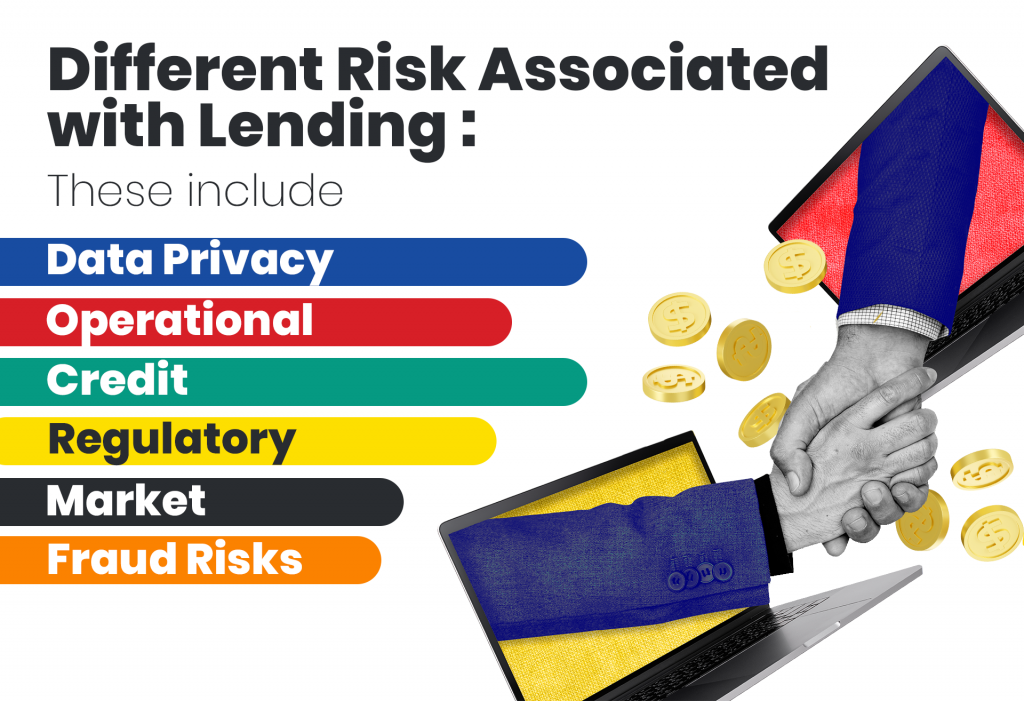
Digital lending risks abound in the current scenario, which require careful navigation. The need for suitable risk management in lending is increasing by the day. Here is a snapshot of the biggest online lending risks and how financial institutions can navigate the same.
1. Higher consumer risks in digital lending– Banks are facing higher operational risks in online lending. They are streamlining the process through the adoption of paperless loan approvals, while using automation to enhance overall quality and time alike.
There is a concern regarding risks of customer data safety, since they share account and personal details, credit history and a lot more on applications. Banks and financial institutions are now looking at increasing cyber security in lending and measures to implement mechanisms for data privacy in lending.
Dedicated security prevention is possible with the right technological framework and solutions which BFS players are steadily opting for.
2. Credit risks– There is a need for proper credit risk assessment in digital lending, considering how customers with poor or low credit may lead to growing NPAs and hassles for BFS players
At the same time, there is always a risk of defaults in the future. Hence, these companies need to use data analytics and advanced credit evaluation systems for ascertaining the creditworthiness of borrowers.
There is also a need for swift assessment and proper credit evaluation models can help address the same digitally.
3. Compliance and regulatory risks- BFS players have to increasingly factor in compliance risks in fintech lending. The RBI and other authorities are coming up with evolving guidelines and regulatory mechanisms that have to be adhered to in a strict manner without lapses.
Usage of artificial intelligence, insights, and regulatory mechanisms is the solution to navigate these challenges.
4. Market risks in digital lending– There are always risks of market changes, volatility, and fluctuations that may turn out to be problematic for digital lenders.
Hence, using advanced AI-based forecasting models and analytics could help gauge market patterns, trends, and consumer preferences. This will aid the creation of products and services, while boosting strategic decision-making simultaneously.
5.Operational risks- Digital lending often works through a transaction process that has multiple layers. Many services are often outsourced to several entities. It sometimes becomes complicated, in terms of redressing grievances, taking care of customer complaints, and ensure effective and prompt service.
This can be navigated with the use of advanced AI-based Chatbots for resolving most customer queries and prompt engagement with customers. From algorithms that personalise customer journeys and recommend products to those that quickly resolve issues or take care of complaints, automation can work wonders in this case.
6.Fraud risks– There are always risks pertaining to fraudulent applications, transactions, and breach of trust within the ecosystem.
BFS players can ensure better fraud prevention in digital lending with advanced automation. Historical data analytics can help gauge patterns of a fraudulent nature. This can help detect and combat frauds in a better manner.
NBFCs and banks should endeavour to periodically get security audits done, while implementing robust Cyber security measures at the same time. From firewalls and advanced encryption protocols to multi-factor authentication, there are several options available.
Identity verification can be scaled up with biometric authentication, digital KYC, and quick credit bureau checks. Data analytics can be used to analyse credit histories and verify income and debt-to-income ratios. Diversifying lending portfolios is also recommended for combating market risks more effectively.

1.What are the different risk associated with lending?
There are several risks associated with lending. These include data privacy, operational, credit, regulatory, market and fraud risks.
2.What are the risks associated with digital finance?
Digital finance faces risks linked to the privacy of consumer data, breaches in security frameworks, preventing frauds, credit risks, and compliance/regulatory risks.
3.How do market and economic factors impact digital lending risks?
Fluctuations in the market on account of geopolitical and economic factors can impact consumer behaviour and also lending rates. The effect on these variables may lead to business risks for the institution.
4.What measures can be taken to address the risk of borrower default in digital lending?
Borrower default risks can be minimised with proper data analytics for evaluating historical borrower data, credit histories, debt-to-income ratios, track records, and other vital information. This helps establish the creditworthiness of individual buyers, while flagging risky customers in advance.